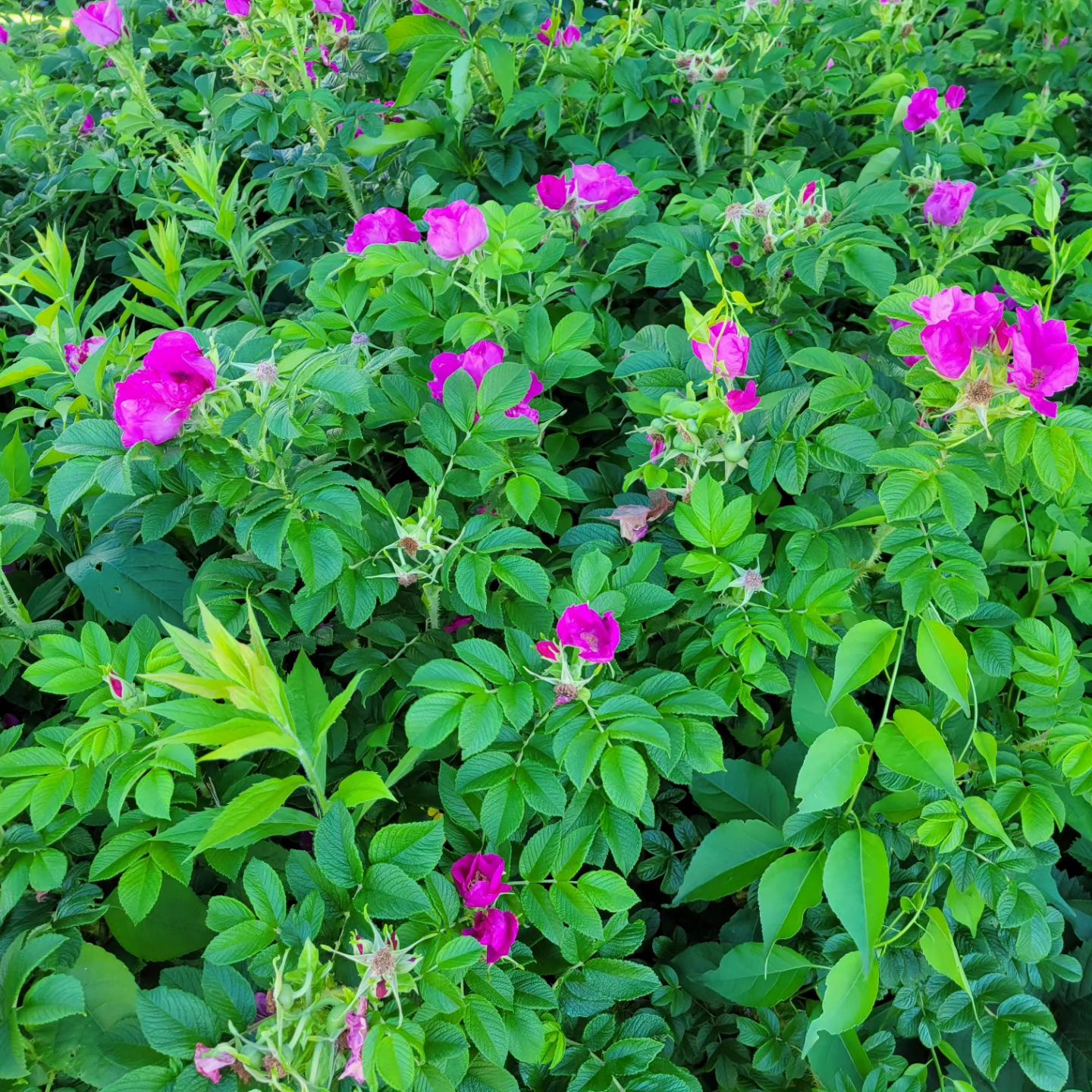Growing Techniques: How To Grow Wild Rose Plants
Imagine stepping into a garden filled with the delicate beauty and enchanting fragrance of wild roses. Cultivating these timeless symbols of romance and resilience can transform any landscape into a breathtaking tapestry of color and scent. Growing wild rose plants is not just a horticultural endeavor; it’s an invitation to nurture nature’s elegance right in your own backyard.
Wild roses, with their graceful blooms and hardy nature, offer a captivating challenge to gardeners of all levels. From their rugged origins in various climates to their ability to thrive with minimal care, these plants embody both beauty and adaptability. Whether you’re drawn to their historical significance, their ecological benefits, or simply their stunning appearance, learning how to cultivate wild roses opens a door to a world of gardening satisfaction and natural charm. Join us as we explore the art and science of nurturing wild rose plants, and discover how you can bring their timeless allure into your own outdoor sanctuary.
How To Grow Wild Rose Plants & Why?
We’ll discuss the topic step by step. So, bear with us, and let’s dive into it:
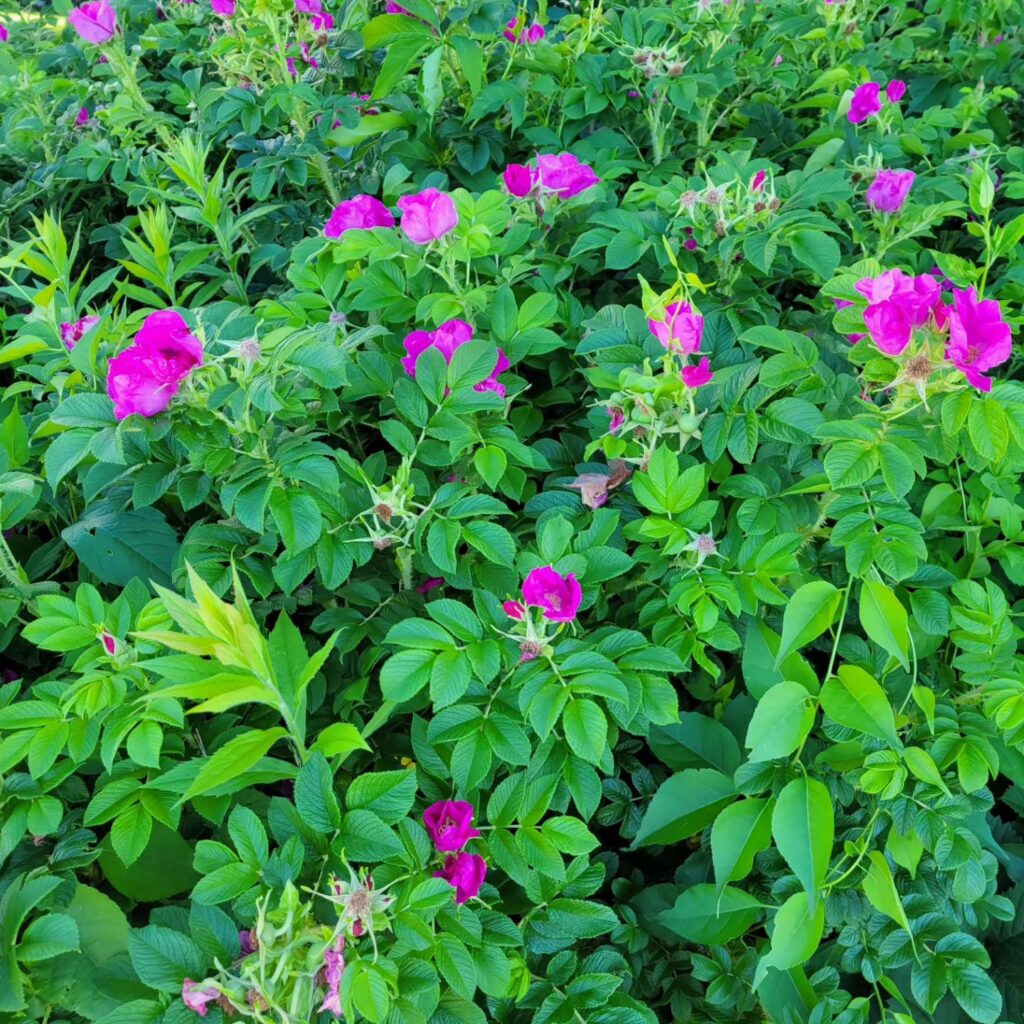
What Are Wild Roses?
Wild roses, botanically classified under the genus Rosa, encompass a diverse group of flowering shrubs that are native to various regions across the globe. Here’s a concise overview of these enchanting plants:
Origin and Distribution
Wild roses are found naturally in temperate regions of Europe, Asia, North America, and even parts of Africa. They have adapted to a wide range of climates, from subarctic to subtropical zones.
Characteristics and Varieties
- Flowers: Typically feature five petals, often in shades of white, pink, or red.
- Foliage: Often serrated edges with a matte texture, varying in shades of green.
- Fruit: Known as rose hips, these develop from the flowers and are rich in vitamin C.
Cultural Significance
- Historical Importance: Wild roses have been cultivated for centuries, valued for their beauty and medicinal properties.
- Symbolism: Often associated with love and beauty in various cultures and traditions.
Ecological Importance
- Habitat: Provide food and shelter for wildlife, including birds and small mammals.
- Conservation: Some wild rose species are important indicators of ecosystem health due to their sensitivity to environmental changes.
Gardening and Landscaping
- Cultivation: Can be grown from seeds, cuttings, or grafts, depending on the species.
- Landscaping: Ideal for naturalistic gardens, hedgerows, and as part of wildlife-friendly landscaping.
Understanding the nature and characteristics of wild roses is essential for anyone interested in their cultivation or conservation, offering a deeper appreciation for these enduring symbols of natural beauty.
Where Do Wild Roses Grow?
Wild roses can be found across diverse landscapes worldwide, thriving in both natural and cultivated settings. Here’s a concise look at their preferred habitats and geographical distribution:
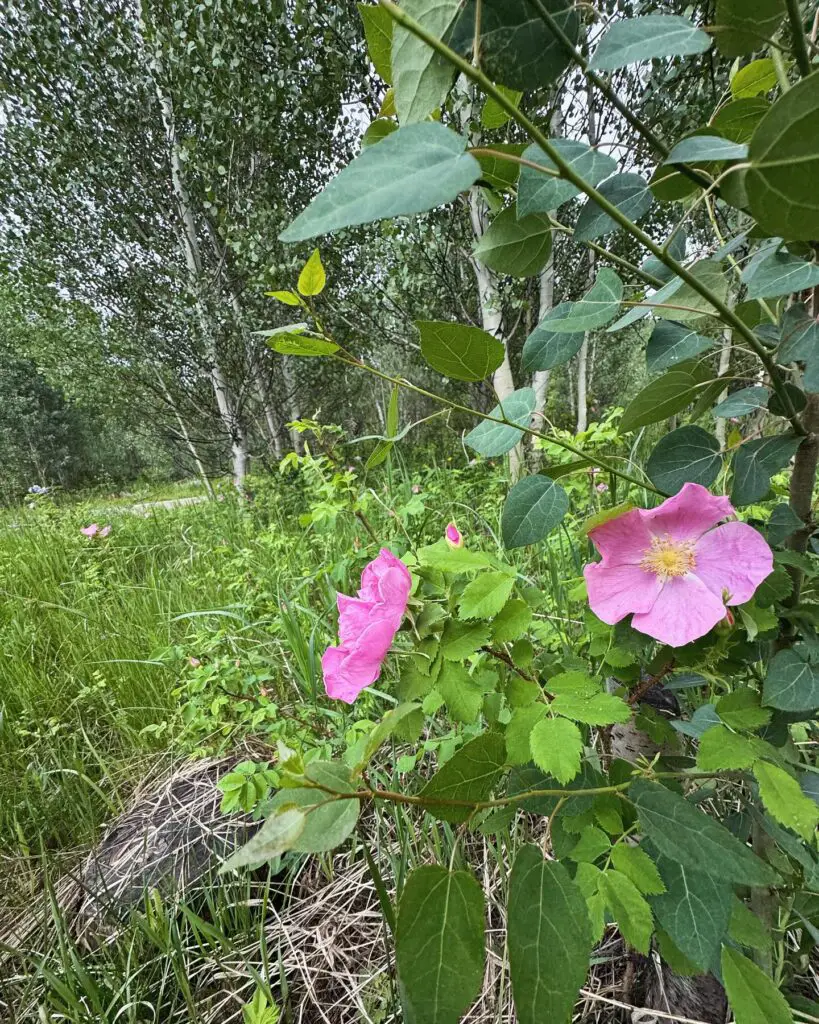
Natural Habitats:
Wild roses are adaptable and resilient, often thriving in:
- Temperate Regions: They flourish in temperate climates, including North America, Europe, and parts of Asia.
- Varied Terrains: These roses can be found in forests, meadows, and even along coastal regions.
- Altitude Tolerance: Some species grow at higher altitudes, showcasing their ability to adapt to different environmental conditions.
Geographical Distribution:
- North America: Species like Rosa virginiana are prevalent in the eastern United States, while Rosa californica is native to the western states.
- Europe: Various species are distributed across the continent, from Rosa canina in the Mediterranean to Rosa rugosa in northern regions.
- Asia: Wild roses, such as Rosa multiflora, are widespread in countries like China and Japan.
Cultivated Environments:
- Gardens and Parks: Many wild rose species have been cultivated for ornamental purposes, enriching gardens with their natural beauty.
- Urban Landscapes: They are often planted in cities and towns for their aesthetic appeal and ecological benefits.
Understanding where wild roses grow can inspire gardeners to create environments that mimic their natural habitats, ensuring these exquisite blooms continue to thrive for generations to come.
Why Choose Wild Roses for Your Garden?
Wild roses offer a multitude of reasons to grace your garden with their presence. Renowned for their natural beauty and resilience, these plants bring a host of benefits that appeal to both novice and experienced gardeners alike.
Beauty and Diversity:
Wild roses come in a stunning array of colors, shapes, and sizes, enriching any garden with their diverse blooms. From vibrant reds to soft pinks and creamy whites, their petals create a captivating visual spectacle throughout the growing season.
Hardiness and Adaptability:
These roses are notably resilient, thriving in various climates and soil conditions. They require minimal maintenance once established, making them ideal for low-maintenance gardens or naturalized landscapes. Their ability to withstand harsh weather and resist pests and diseases makes them a dependable choice for gardeners looking to cultivate robust plants.
Ecological Benefits:
Beyond their aesthetic appeal, wild roses provide essential ecological benefits:
- Pollinator Support: Their blooms attract bees, butterflies, and other pollinators, promoting biodiversity and enhancing garden productivity.
- Wildlife Habitat: Rose hips produced after flowering serve as a food source for birds and small mammals, contributing to local wildlife conservation efforts.
Historical and Cultural Significance:
Wild roses hold symbolic importance across cultures and time periods, symbolizing love, beauty, and endurance. Planting these roses connects gardeners to a rich heritage while adding a touch of timeless elegance to outdoor spaces.
Incorporating wild roses into your garden not only enhances its visual appeal but also supports local ecosystems and connects you to a tradition steeped in natural beauty and cultural significance.
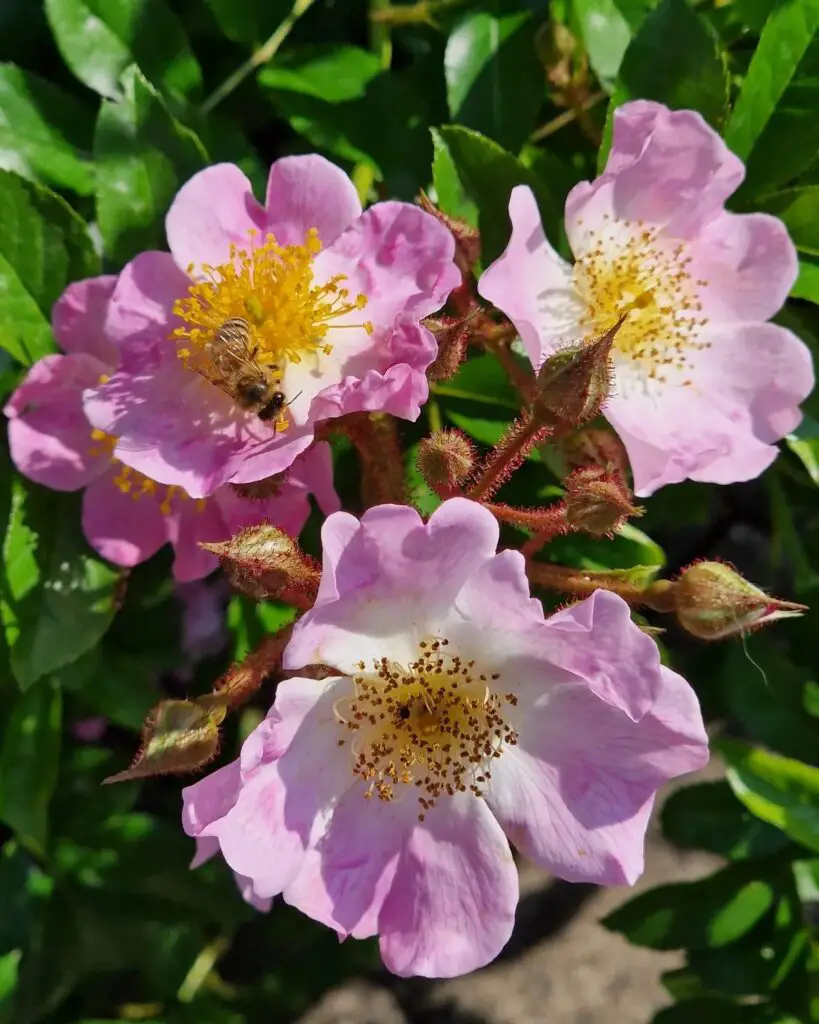
Planting Tips and Care for Wild Roses
Wild roses, cherished for their natural beauty and hardiness, can thrive with proper planting and care techniques. Whether you’re starting with bare root plants or container-grown specimens, following these essential tips ensures your wild roses flourish in any garden setting.
Choosing the Right Location
Selecting an optimal location is crucial for the success of wild roses. These plants typically prefer:
- Sunlight: Plant in an area that receives at least six hours of direct sunlight daily.
- Soil Quality: Well-drained soil rich in organic matter promotes healthy root growth.
- Spacing: Allow adequate space (about 2-3 feet apart) between plants for air circulation and growth.
Avoid planting near dense shade or competition from other aggressive plants, as this can hinder their development.
Planting Techniques
When planting wild roses, follow these steps for best results:
- Prepare the Soil: Loosen the soil to a depth of about 12 inches and incorporate compost or aged manure to improve fertility.
- Planting Depth: For bare root roses, dig a hole deep enough to accommodate the roots without crowding or bending them. For container-grown roses, gently remove from the pot and plant at the same depth as they were in the container.
- Watering: Immediately after planting, water thoroughly to settle the soil around the roots. Continue to water regularly, especially during dry spells, to keep the soil evenly moist but not waterlogged.
- Mulching: Apply a layer of organic mulch around the base of the plant to conserve moisture, suppress weeds, and regulate soil temperature.
- Support and Pruning: Depending on the variety, some wild roses may benefit from light pruning to encourage bushier growth and more prolific flowering. Provide support like trellises or stakes if necessary.
Maintenance and Care
To ensure your wild roses thrive year after year, follow these maintenance tips:
- Fertilization: Feed roses with a balanced fertilizer in early spring and after the first bloom cycle.
- Watering: Monitor soil moisture regularly, especially during hot weather, and water deeply when needed.
- Disease and Pest Control: Keep an eye out for common rose diseases like powdery mildew or aphid infestations. Use appropriate fungicides or insecticides if necessary, following manufacturer’s instructions.
- Winter Protection: In colder climates, protect plants with a layer of mulch around the base and consider wrapping canes with burlap to shield them from frost damage.
- Deadheading: Remove spent flowers to encourage continuous blooming throughout the growing season.
By providing proper care and attention, you can enjoy the beauty of wild roses in your garden while supporting their resilience and natural charm.
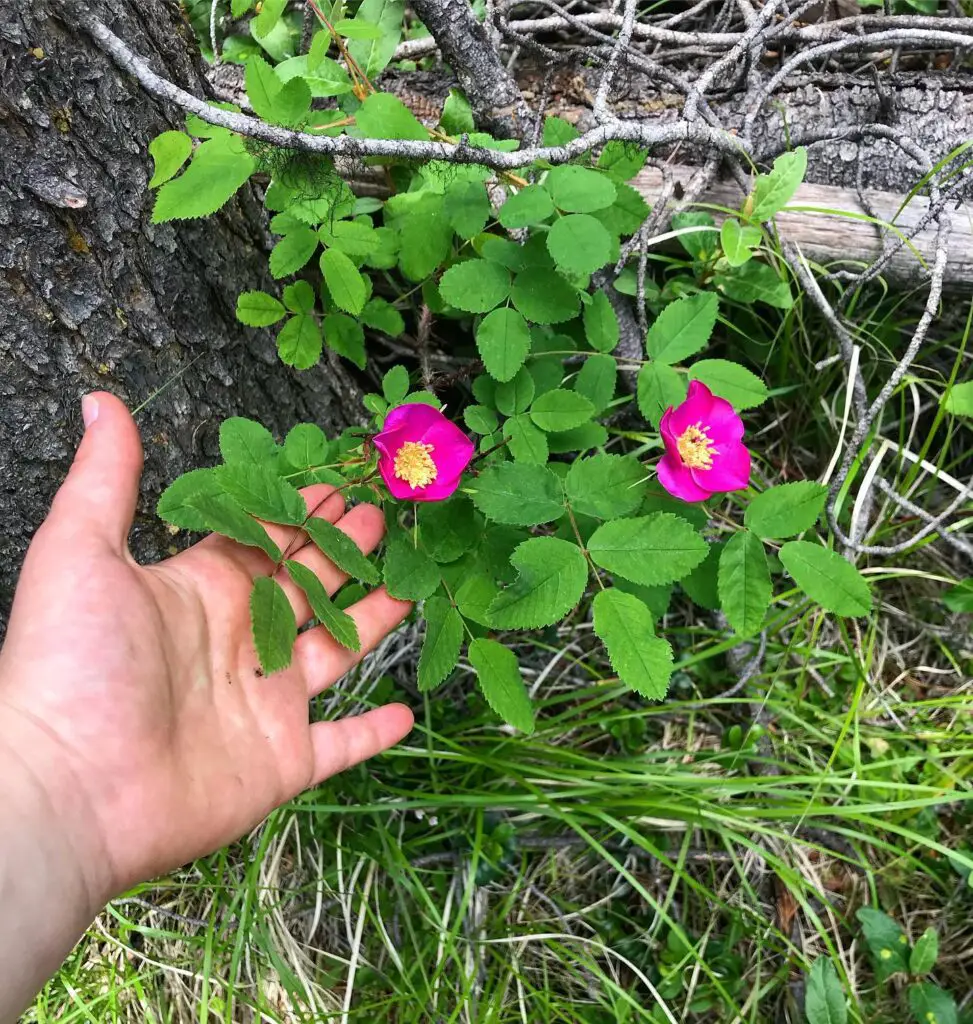
Types of Wild Roses
Wild roses encompass a diverse array of species and hybrids, each offering unique characteristics and charm. Understanding the various types allows gardeners to choose specimens that best suit their climate, landscape, and aesthetic preferences.
Species and Hybrids
Wild roses are broadly categorized into species roses and hybrid roses:
- Species Roses: These are naturally occurring wild roses found in various regions worldwide. They are typically hardy and well-adapted to their native climates. Examples include Rosa rugosa, Rosa gallica, and Rosa canina.
- Hybrid Roses: These are cultivated varieties that result from crossing different species of roses. Hybrids often combine desirable traits such as disease resistance, fragrance, and a wide range of colors. Popular hybrids include Rosa ‘Knock Out’, Rosa ‘New Dawn’, and Rosa ‘Peace’.
Characteristics and Growing Conditions
Each type of wild rose has specific characteristics and growing requirements:
- Climate Adaptability: Different species thrive in varying climates, from the cold-hardy Rosa rugosa, which withstands harsh winters, to the heat-tolerant Rosa banksiae, which flourishes in warmer regions.
- Size and Form: Wild roses vary in size and growth habit, ranging from compact shrubs to sprawling climbers. For example, Rosa multiflora forms dense thickets, while Rosa woodsii grows as an upright shrub.
Popular Varieties
Several wild rose varieties are favored for their beauty and resilience:
- Rosa rugosa: Known for its wrinkled leaves and fragrant pink or white blooms, Rosa rugosa is prized for its hardiness and disease resistance.
- Rosa canina: Commonly known as dog rose, this European native features single, pink blooms and is often used in herbal medicine.
- Rosa gallica: A historic rose dating back to ancient times, Rosa gallica bears fragrant, semi-double flowers in shades of pink and red.
Cultural Significance
Wild roses hold cultural significance beyond their ornamental value:
- Symbolism: Throughout history, roses have symbolized love, beauty, and resilience, making wild roses a cherished emblem in gardens and literature.
- Ecological Importance: Wild roses provide habitat and food for pollinators, birds, and other wildlife, contributing to biodiversity and ecosystem health.
Understanding the diversity and characteristics of wild roses empowers gardeners to select and cultivate varieties that enhance their landscapes while preserving these natural treasures for future generations. Whether in a formal garden, a cottage-style landscape, or a naturalized setting, wild roses bring enduring beauty and ecological benefits to any environment.
Frequently Asked Questions
What are the benefits of growing wild roses in a garden?
Growing wild roses offers numerous benefits. They are hardy and often more disease-resistant than cultivated varieties. Their diverse forms and colors add natural beauty, while their fragrance and nectar attract pollinators. Additionally, they contribute to biodiversity by providing habitat and food for wildlife.
How do I choose the right type of wild rose for my garden?
Consider your climate and landscape. Opt for species roses like Rosa rugosa for cold climates or Rosa banksiae for warmer regions. Hybrid roses such as Rosa ‘Knock Out’ offer a wider range of colors and disease resistance. Select varieties that suit your aesthetic preferences and garden space.
What care do wild roses require?
Wild roses generally require minimal care once established. Plant them in well-drained soil and provide adequate sunlight. Water regularly, especially during dry spells, and prune annually to maintain shape and encourage new growth. Remove dead or diseased wood to prevent pests and diseases.
Can wild roses be grown in containers?
Yes, many wild rose varieties, especially compact species and hybrids, can thrive in containers. Choose large pots with good drainage, use quality potting mix, and place them in a sunny location. Container-grown roses require regular watering and occasional feeding during the growing season for optimal health and bloom.
Conclusion
In conclusion, cultivating wild rose plants offers gardeners a gateway to both beauty and resilience in their landscapes. From the rugged charm of species roses to the vibrant hues of hybrid varieties, these plants thrive in diverse climates with minimal care.
Beyond their ornamental value, wild roses play crucial roles in supporting biodiversity and ecological health. Whether in formal gardens or naturalized settings, the allure of wild roses lies not only in their timeless elegance but also in their ability to enrich the environment. Embrace the art of growing wild roses and discover a garden filled with enduring beauty and ecological benefits.

I’m Shofi, a passionate gardener and blogger. I have 10+ years of experience in gardening and hold certifications in horticulture and garden design. I share my knowledge and skills through my garden blog to inspire and educate others on the joys of gardening. I try to provide valuable information and create a community for gardeners of all levels to connect and learn. My ultimate goal is to inspire others to start their own gardens and connect with nature.

